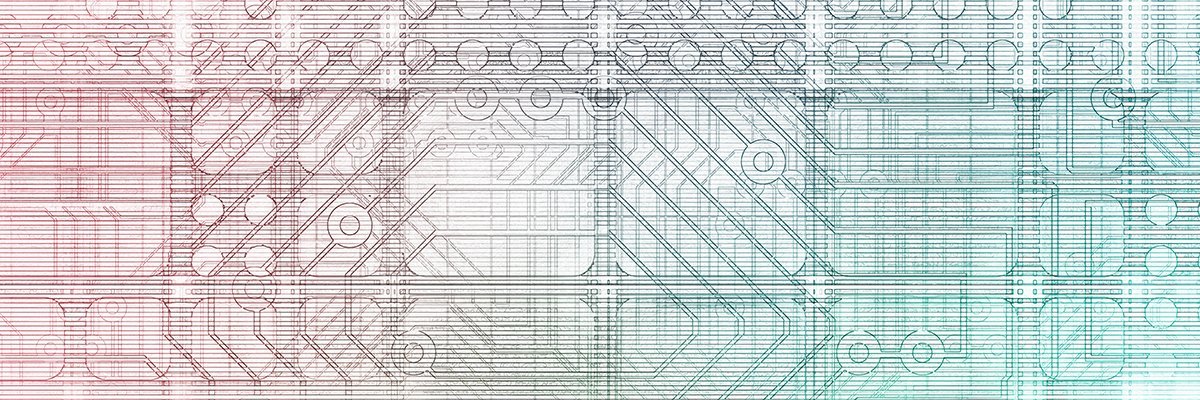Does low code make applications overly complex?

To be clear, the inevitable outcome of low code is not necessarily complexity.
Just like traditional application development, complexity can and often does
make its way into the lifecycle of the product code base. While not inevitable,
it is common. There are many steps you can take to reduce complexity in apps
regardless of how they are built, which improves performance, scalability,
availability, and speed of innovation. Yes, a low code application, like all
applications, can become complex, and requires the use of simplification
techniques to reduce complexity. But these issues are not tied to the use of low
code. They are just as significant in regular product development processes.
What low code does increase is the amount of code in your application that was
not written directly by your development team. There is more code that was
auto-generated by the low code platform, or included in libraries required for
your application to function, but was not the product of your developers. Thus
there is often more “unknown” code in your application when you use low code
techniques. But unknown is not the same thing as complexity.
Ultra-fast Microservices: When Microstream Meets Wildfly
Microservices provide several challenges to software engineers, especially as a
first step to facing distributed systems. But it does not mean that we're alone.
Indeed there are several tools to make our life easier in the Java world,
especially MicroProfile. MicroProfile has a goal to optimize enterprise
Java for a microservices architecture. It is based on the Java EE/Jakarta EE
standard plus API specifically for microservices such as a REST Client,
Configuration, Open API, etc. Wildfly is a powerful, modular, and lightweight
application server that helps you build amazing applications. ... Unfortunately,
we don't have enough articles that talk about it. We should have a model, even
the schemaless databases, when you have more uncertain information about the
business. Still, the persistence layer has more issues, mainly because it is
harder to change. One of the secrets to making a scalable application is
statelessness, but we cannot afford it in the persistence layer. Primarily, the
database aims to keep the information and its state.
CPaaS – a technology for the future

What has made CPaaS the go-to method for customer engagement is the ubiquity of
cloud technology and how it has transformed the way businesses operate.
“Companies had to come up with different ways to interact with customers,” says
IDC research VP Courtney Munroe, who points out that in the last few years there
has been a steady move to cloud and, in particular, there has been a confluence
of mobility and cloud. “More people use smartphones and companies realised that
they could develop apps for them,” he says. Steve Forcum, chief evangelist at
Avaya, is also aware of the importance of cloud within enterprises looking to
engage with customers. “Some customers may keep elements of their communications
stack in their datacentres, but more are then infusing cloud-based
capabilities,” he says. “We’ve moved to help customers across this spectrum by
bringing cloud-based benefits to their datacentres.” But the technology on its
own is in second place to the need that companies have to be more responsive to
customers. The underlying drive towards CPaaS is the need to offer a more
flexible way to interact with customers.
How Should you Protect your Machine Learning Models and IP?

The most concerning threat is frequently “Will releasing this make it easy for
my main competitor to copy this new feature and hurt our differentiation in the
market?”. If you haven’t spent time personally engineering ML features, you
might think that releasing a model file, for example as part of a phone app,
would make this easy, especially if it’s in a common format like a TensorFlow
Lite flatbuffer. In practice, I recommend thinking about these model files like
the binary executables that contain your application code. By releasing it you
are making it possible to inspect the final result of your product engineering
process, but trying to do anything useful with it is usually like trying to turn
a hamburger back into a cow. Just as with executables you can disassemble them
to get the overall structure, by loading them into a tool like Netron. You may
be able to learn something about the model architecture, but just like
disassembling machine code it won’t actually give you a lot of help reproducing
the results. Knowing the model architecture is mildly useful, but most
architectures are well known in the field anyway, and only differ from each
other incrementally.
The new cybersecurity mandate

Bearing security in mind at all times rings true, as it inspires us to think
about what the security implications are as we are making changes. On the other
hand, it has something of a resemblance to the old premature performance
optimization debate. We’re not going to wade into that here (or the test-driven
development debate, or any other similar one). I just want to point out that
software development is latent with complexity and obstacles to action. Security
considerations must be harmonized into the equation. The next bullet point in
the fact sheet makes the following statement: “Develop software only on a system
that is highly secure and accessible only to those actually working on a
particular project.” This one makes the reader pause for a moment. It seems to
have arrived at the conclusion that in order to build secure systems, we should
build secure systems. If we are patient, the next sentence helps deliver the
full meaning: “This will make it much harder for an intruder to jump from system
to system and compromise a product or steal your intellectual property.” What
the framers of this fact sheet are driving at here is actually something like a
rephrasing of zero trust architecture.
US Passes Law Requiring Better Cybercrime Data Collection
The impact of this legislation depends entirely on the usefulness of the
taxonomy itself, says Jennifer Fernick, senior vice president and global head of
research at security consultancy NCC Group. "The authors of that taxonomy need
to meaningfully answer what data points about cybercrime will enable meaningful
intervention for the future prevention of these crimes," Fernick, who is also a
National Security Institute visiting technologist fellow at George Mason
University, tells Information Security Media Group. "It is important, for
example, to distinguish at minimum between computer-related crimes that attack
human judgment or exploit edge cases in business processes from crime that is
enabled through specific hardware or software flaws that can be exploited by
criminals attacking an organization's IT infrastructure. In the latter case, it
would be valuable in particular to identify the specific software or hardware
components, or even specific security vulnerabilities or CVEs, which served as
the substrate for the attack, to help inform organizations about where they
would most benefit from strengthening their cybersecurity defenses," Fernick
says.
How smart data capture is innovating the air travel experience

Using smart data capture on mobile devices has multiple benefits. Unlike fixed
scanners, it enables customer service agents to perform multiple tasks anywhere
in the airport. Airlines can automate processes such as check-in, security
queues, lounge access, and luggage management, providing a modern, sleek
impression from the first moment a passenger enters the terminal. Compared with
the old approach of using rugged devices at fixed stations, smart data capture
on mobile devices delivers significant customer benefits and staff efficiencies.
Airport queues have been big news recently, but with staff equipped with smart
mobile devices, waiting times can be cut as they can patrol queues and scan IDs,
passports and QR codes to speed passengers through check-in and deliver a more
personalised experience — accessing details about a passenger’s seat preferences
or dietary requirements, for example. Customer service agents using smart mobile
devices can easily manage oversized luggage presented at the gate and quickly
check it into the hold.
Are Blockchain and Decentralized Cloud Making Much Headway?

Basically, the value of decentralized cloud in its current form boils down to
the circumstances and needs of the users. “If you’re setting up a mining node
and need some cloud power, why would you want to pay AWS?” Litan asks. A
decentralized cloud might be cheaper to run in such cases, she says, which
appeals to miners who want cheap computing in order to make money on the
margins. At the moment, when many developers write applications, they look to
the most readily available cloud service, Litan says, and then wind up deploying
on the main blockchain where there is no control over where Ethereum or Bitcoin
run. “It’s like saying, ‘Where’s the internet running?’” There is some
possibility for blockchain and decentralized cloud to gain more momentum down
the road, but for now their impact on the entirety of cloud computing remains
rather niche. “It may become more important as people start writing
compute-intensive workloads and they want to keep the cost down,” Litan says.
Decentralized cloud computing may also be useful for organizations running
non-blockchain applications, she says.
IT hiring: Assumptions and truths about the current talent shortage

It can be difficult to drive growth when teams are stretched and global tensions
are high, as they have been for the better part of two years. New process
adoption can meet resistance from employees who are already overwhelmed. If and
when this happens, a stalemate often follows, and team leaders opt to wait it
out, deferring change to another team or another time. ... The pandemic
challenged us all to rethink the way we work. Investments in software took the
place of physical office space, and teams were pushed to automate repeatable
tasks to maintain a pre-pandemic level of efficiency. With the implementation of
artificial intelligence and machine learning, workflow improvements can be
expedited, lessening the need for as many employees. Technologies like low-code
and no-code are easing the burden felt by developers by enabling employees
outside of IT to build systems unique to their needs without the slowdown
created by a backlog of IT tickets. In turn, this frees the bandwidth for
developers to turn toward other pressing concerns like security.
Is it time to fire yourself?

This idea was brought to life when I interviewed Bracken Darrell, the CEO of
Logitech International, a computer peripherals manufacturer headquartered in
Switzerland and the US. In that conversation, he shared with me the story of
how, about five years into his tenure at the company, he asked himself one
Sunday night, “Am I the right person for the next five years? On paper, he
certainly was, he told me, given that all his changes at the company had lifted
the stock about 500%. “On the other hand, I had been involved in every single
personnel and strategic decision,” he said. “My disadvantage was that I knew too
much, and that I was too embedded in everything we were doing. I just thought to
myself that I might be done.” So he decided that night that he was going to fire
himself, but he would sleep on the decision. The punchline is that he didn’t
fire himself, but he did wake up the next morning with a sense of clarity of
what he needed to do: “I have to rehire myself but have no sacred cows. It was
super exciting and fun, and I started changing things that I had put in place.
Fortunately, I didn’t have to change things radically, but I felt new
again.”
Quote for the day:
"Risks are the seeds from which
successes grow." -- Gordon Tredgold
No comments:
Post a Comment